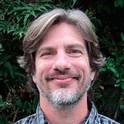Successional pressures resulting from fire suppression and reduced grazing have resulted in vegetation-type conversion in the open spaces surrounding the urbanized areas of the San Francisco bay area. Coverage of various vegetation types were sampled on seven sites using a chronosequence of remote images in order to measure change over time. Results suggest a significant conversion of grassland to shrubland dominated by Baccharis pilularison five of the seven sites sampled. An increase in Pseudotsuga menziesii coverage was also measured on the sites where it was present. Increases fuel and fire hazard were determined through field sampling and use of the FARSITE fire area simulator. A significant increase in biomass resulting from succession of grass-dominated to shrub-dominated communities was evident. In addition, results from the FARSITE simulations indicated significantly higher fire-line intensity, and flame length associated with shrublands over all other vegetation types sampled. These results indicate that the replacement of grass dominated with shrub-dominated landscapes has increased the probability of high intensity fires.
- landscape,
- vegetation,
- fire hazard,
- san francisco,
- bay
Available at: http://works.bepress.com/will_russell/8/
